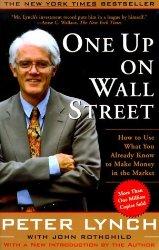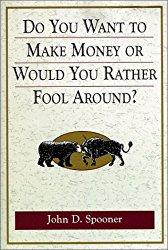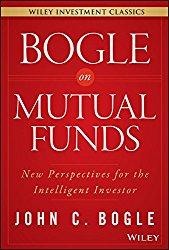A couple of years ago I got into a lengthy discussion of stock pricing with a reader. Unfortunately the exchange ended up being by email (I’d much rather readers post comments to the blog – I get so few of them). I contended that stocks are priced based on the dividend they pay, or actually, based on the potential future dividend. The reader basically said that I was incorrect and that stocks are based on a lot of factors, the dividend being a very minor one. (In actuality, we’re both right, and I’ll explain why in a minute). In any case, he cited Apple as a company that would never pay a dividend; therefore, the idea that it was priced based on potential future dividends was ludicrous. A few days after our debate, Apple announced that it would start paying a quarterly dividend of about 2%.
How is he right? Stock pricing isn’t like pricing at the supermarket. You don’t walk in, pick up an item from the shelf and see a price sticker on it. (Yes, I know that we’ve gone to bar codes now, and the price (might) be on the shelf, but bear with me – I’m from the 80’s.) Prices fluctuate constantly and for a wide variety of reasons. Some people look at earnings and decide what a stock should be worth. Some look at how likely it is for the stock to have an earnings surprise and bid the stock up accordingly. Some people sell shares and don’t care what the price is because they have a large profit and just want to unload it, or they need to pay for their daughter’s wedding. Some people see a stock go up or down in price, and buy or sell it because it went up or down in price. They figure that if the price is going up, they’ll be able to sell it at a higher price.
Very few of these people are probably thinking about the dividend that the stock is paying. Heck, a lot of these stocks may not even have a dividend. So I must be wrong, right?
Well, even though all of these people don’t know it, they are basing the price they pay on the projected future dividend. Note that the “projected future” part is very important. Note also that there are fluctuations int he price – the dividend just sets the price range.
For more information on why you can have too much diversification, try one of these great books:


You see, the amount that people are willing to pay for a stock depends on its potential future return. This return must be enough to justify the risk that is being taken on. If one can get a 5% return from a bank CD, one wouldn’t even think about buying a stock unless one thought a 8% return or greater was possible. Why trade a certain return of 5% for a possible return of 6%? You wouldn’t. You would drop the price you were willing to pay for the stock until the potential return was at least 8%.
Also, the more uncertain the return, the greater the return must be. If you are buying shares of McDonalds, for example, you can assume that the amount of traffic at their restaurants won’t change by that much during any given year. It isn’t like everyone is going to swear off Big Macs at once. You can therefore predict with reasonable certainty how much the company will earn during the next year (or the next five years), and therefore you know about what the price will be. (Here you’re also assuming that the price to earnings ratio will remain about the same, which isn’t too bad an assumption.)
On the other hand, if you are buying shares of a silicon chip maker like Cypress Semiconductor, the future becomes far less certain. You don’t know if research and development won’t pan out, or the Koreans will dump a bunch of cheap chips on the market, or what. You also don’t know if interest in electronics will remain, or if manufacturers will choose Cypress chips or one from their rivals. Because they are somewhat of a commodity, the fortunes of a company can be pinned to a few cents savings per chip made. Because of this uncertainty, shares of Cypress are priced cheaply relative to shares of a company like McDonalds. Note that the PE ratio for Cypress is 17.5, while that for McDonalds is about 18.5. People are willing to pay a little more for more certain earnings.
But wait, that’s earnings, and I was talking about dividends, right? Well, let’s say that a company never, ever paid a dividend. What return would a shareholder receive? Another way to look at it is, what value would the company be to the shareholder if he never received any share of the profits? True the company might be making a lot of money, but the investor would never see a cent of that. Without a dividend, there is no return to the shareholder. He would not even see capital gains because no one would be foolish enough to buy the shares from him. (OK, someone would be, but that’s beside the point).
Learn how to use mutual funds from the founder of Vanguard:

So, when people are buying stocks, they are trying to figure out what the future dividend will be, and what their return would be based on that dividend, and then pricing the share price accordingly. Granted, this is a Ouija board-type of pricing where people may not even know they are pricing it based on the dividend, but they really are. The reason that people pay more for shares with growing earnings is that if the earnings of the company are higher, they will be able to pay a bigger dividend. Many who price stocks based on earnings forget this fact, but that is what they are doing (that is why earnings matter at all). It is kind of like how the main reason people paint houses is because if they don’t the wood will rot, but they are probably thinking more about how the house looks than wood rot when they decide it’s time to paint again.
Note also that the piddling 2% Apple is paying may seem small, but if you bought the shares back a year ago when the price was half of what it is now, you would now be receiving a 4% dividend on your investment. If you continue to hold the stock and the dividend continues to increase, you effective yield will continue to climb. You might be making 8%, 12%, or 20% in five years.
So, dividends do matter, even if many people have forgotten that fact. When it comes to pricing, it’s all about the dividend.
Join the conversation and help make this blog more exciting! Please leave a comment. Also, if you have an investing question, email [email protected] or leave the question in a comment.
Disclaimer: This blog is not meant to give financial planning advice, it gives information on a specific investment strategy and picking stocks. It is not a solicitation to buy or sell stocks or any security. Financial planning advice should be sought from a certified financial planner, which the author is not. All investments involve risk and the reader as urged to consider risks carefully and seek the advice of experts if needed before investing.
